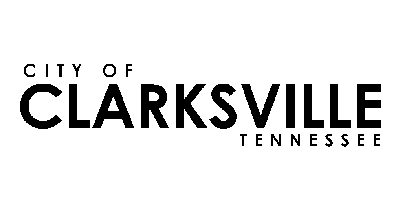-
Description
-
GENERAL STATEMENTOF JOB This is the third of five levels in the Equipment Operations series. Incumbents coordinate and participate in the work of an assigned crew. Responsibilities may include preparing materials and equipment for assigned jobs; assigning tasks to crew members; maintaining records of work performed; and performing the duties of the lower levels.
***PLEASE NOTE: THIS POSITION WILL REMAIN OPEN THROUGH APRIL 9, 2025, OR UNTIL FILLED.***
-
Example of Duties
-
SPECIFIC DUTIES AND RESPONSIBILITIES Essential Functions:
Prioritizes and assigns work to lower-level staff; monitors the performance of lower-level staff; and trains staff on work methods and procedures. Prepares materials and equipment for assigned jobs which may include inspecting materials, checking fluid levels on equipment, and performing related duties. Operates heavy, specialized equipment, which may include back-hoes, rubber tire loaders, large dump trucks, and related equipment. Trains lower-level staff in safety protocols for operating heavy and specialized equipment. Transport equipment and/or materials to designated job site(s). Inspects, maintains, and performs basic repairs to equipment. Prepares and maintains a variety of operational records and reports. Performs other work as required.
-
Typical Qualifications
-
MINIMUM EDUCATION AND TRAINING
Education and Experience
High school graduate or GED equivalent. One (1) year of experience operating equipment requiring a commercial driver's license. An equivalent combination of education and experience sufficient to perform the job's essential duties.
License and Certifications
-
Supplemental Information
-
MINIMUM QUALIFICATIONS AND STANDARDS REQUIRED Knowledge, Skills, and Abilities: Knowledge of:
Applicable tools and equipment. Utilities. Manual labor practices. Equipment maintenance and repair principles and practices. Occupational hazards and safety precautions. Safe driving practices. Recordkeeping principles. Applicable traffic laws, ordinances, and rules.
Skill in:
Prioritizing and assigning work. Operating motor vehicles and applicable equipment. Locating and marking utility lines. Performing preventive maintenance to applicable equipment. Conducting vehicle inspections and recognizing defects. Performing manual labor. Maintaining records. Communication, interpersonal skills as applied to interaction with subordinates, coworkers, supervisor, the public, etc. sufficient to exchange or convey information and to give and receive work direction.
Physical Requirements: The work is heavy work which requires exerting up to 100 pounds of force occasionally, and/or up to 50 pounds of force frequently, and/or up to 20 pounds of force constantly to move objects. Additionally, the following physical abilities are required:
Balancing: Maintaining body equilibrium to prevent falling while walking, standing, or crouching on narrow, slippery, or erratically moving surfaces. The amount of balancing exceeds that needed for ordinary locomotion and maintenance of body equilibrium. Climbing: Ascending or descending ladders, stairs, scaffolding, ramps, poles, and the like, using feet and legs and/or hands and arms. Body agility is emphasized. Crawling: Moving about on hands, knees, hands, and feet. Crouching: Bending the body downward and forward by bending leg and spine. Feeling: Perceiving attributes of objects, such as size, shape, temperature, or texture by touching with skin, particularly that of fingertips. Fingering: Picking, pinching, typing, or otherwise working, primarily with fingers rather than with the whole hand as in handling. Grasping: Applying pressure to an object with the fingers and palm. Hearing: Perceiving the nature of sounds at normal speaking levels with or without correction. Ability to receive detailed information through oral communication, and to make the discrimination sound. Kneeling: Bending legs at knee to come to a rest on knee or knees. Lifting: Raising objects from a lower to a higher position or moving objects horizontally from position-to-position. It occurs to a considerable degree and requires substantial use of upper extremities and back muscles. Mental Acuity: Making rational decisions through sound logic and deductive processes. Pulling: Using upper extremities to exert force to draw, haul or tug objects in a sustained motion. Pushing: Using upper extremities to press against something steady to thrust forward, downward, or outward. Reaching: Extending hand(s) and arm(s) in any direction. Repetitive Motion: Substantial movements (motions) of the wrist, hands, and/or fingers. Speaking: Expressing or exchanging ideas by means of the spoken word including the ability to convey detailed or important spoken instructions to other workers accurately and concisely. Standing: Particularly for sustained periods of time. Stooping: Bending body downward and forward by bending spine at the waist. It occurs to a considerable degree and requires full motion of the lower extremities and back muscles. Talking: Expressing or exchanging ideas by means of the spoken word including those activities in which they must convey detailed or important spoken instructions to other workers accurately, loudly, or quickly. Visual ability 1: sufficient to perform an activity like preparing and analyzing data and figures; transcribing; viewing a computer terminal; and/or extensive reading. Visual ability 2: sufficient to include color, depth perception, and field vision. Visual ability 3: sufficient to determine the accuracy, neatness, and thoroughness of the work assigned or to make general observations of facilities or structures. Visual ability 4: sufficient to operate motor vehicles and/or heavy equipment, both day and night. Visual ability 5: sufficient to perform an activity such as: visual inspection involving small defects, small parts, operation of machines; using measurement devices; and/or assembly or fabrication parts at distances close to the eyes. Walking: Moving about on foot to accomplish tasks, particularly for long distances or move from one work site to another.
|
 City of Clarksville
City of Clarksville $54,964.00 Annually
$54,964.00 Annually
 please see the city of clarksville's benefits page for applicable benefits information.
please see the city of clarksville's benefits page for applicable benefits information.


 Apr 02, 2025
Apr 02, 2025 

